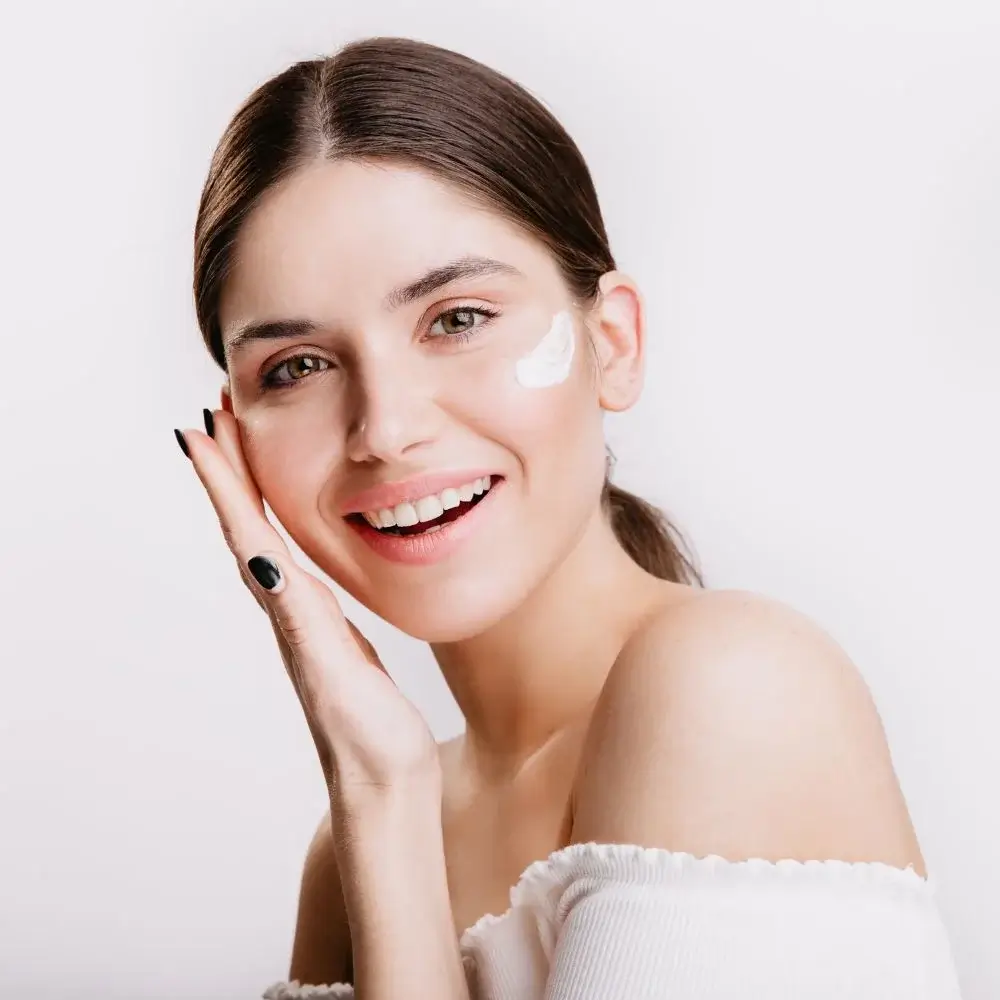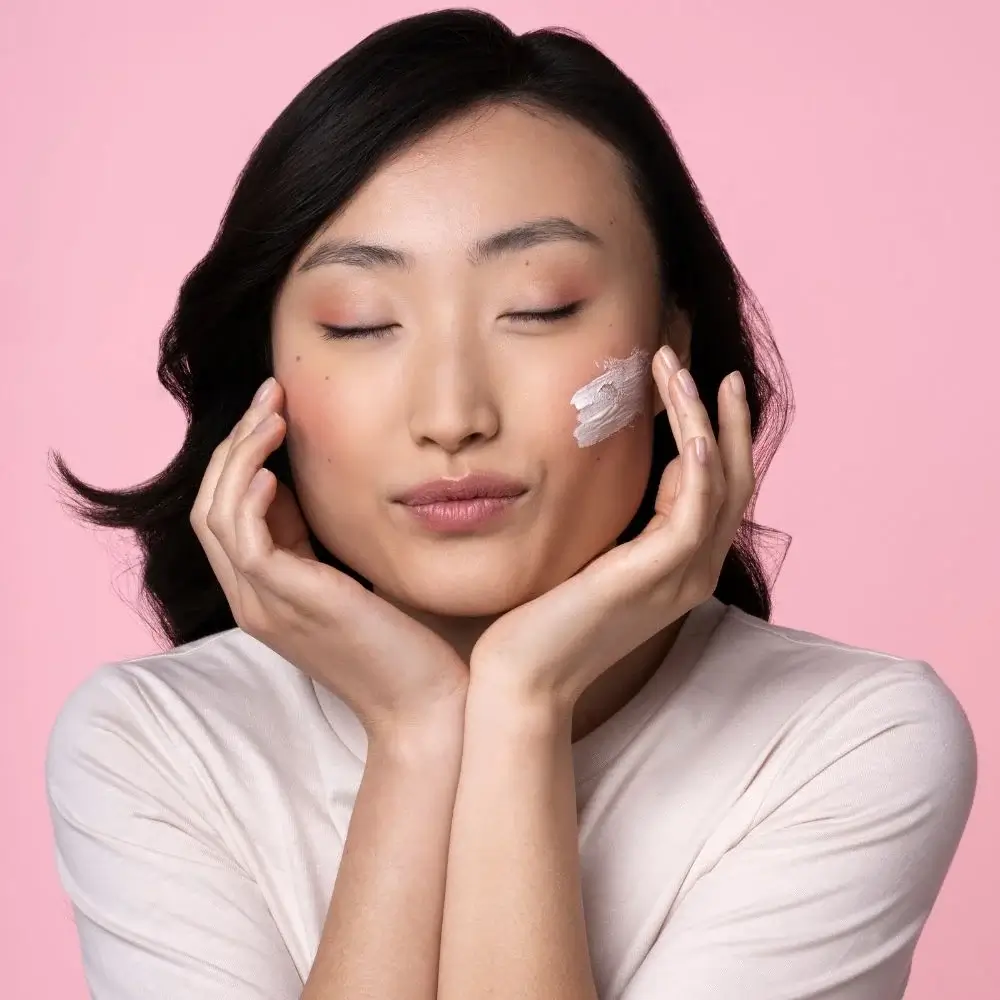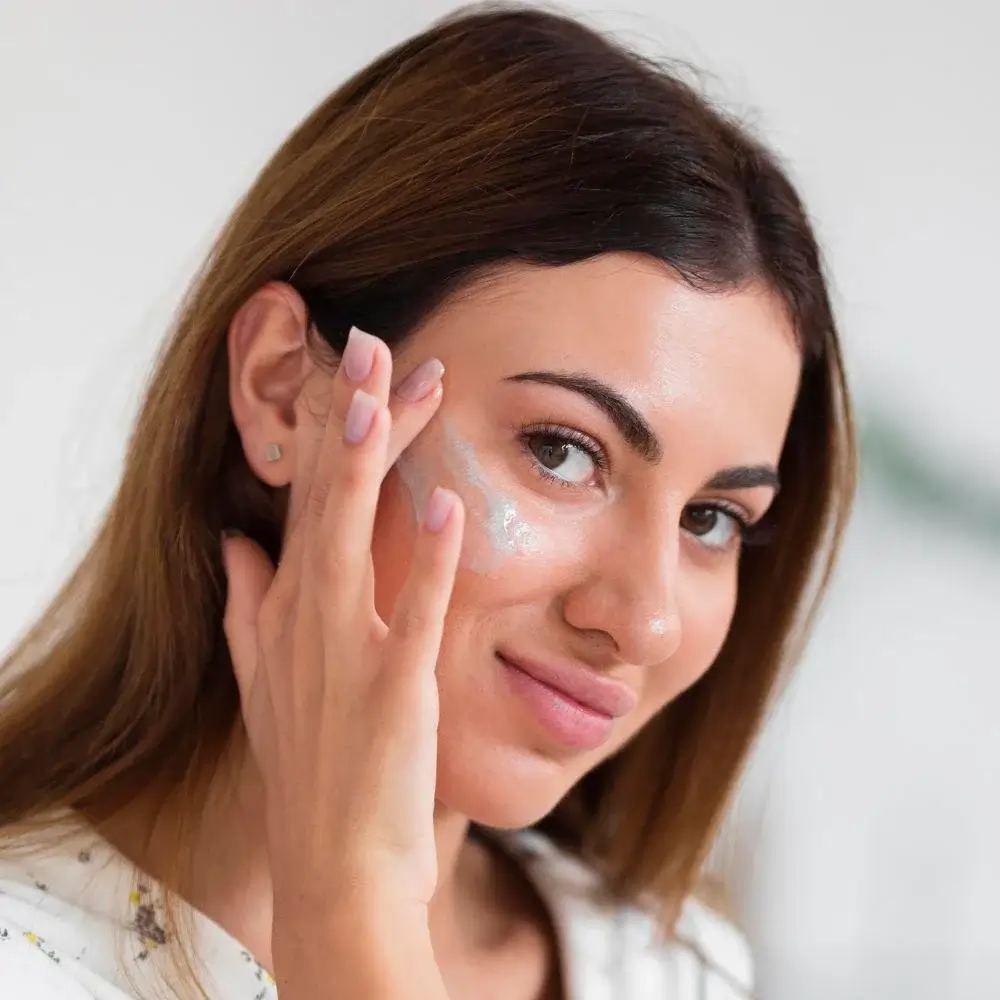As a fashion lover, it’s important to not only look good but also take care of your skin. And with the sun’s harmful UV rays always present, it’s crucial to have a skincare routine that includes sunscreen, especially for our face. But how exactly does sunscreen protect our skin from UV radiation? In this blog post, we’ll dive into the science behind how sunscreen works and why it’s essential to include it in your daily beauty routine.
UV radiation, or ultraviolet radiation, is a type of energy that comes from the sun and can cause damage to our skin. The sun emits different types of UV radiation, including UVA and UVB, which can penetrate the skin and cause sunburns, premature aging, and even skin cancer. Sunscreen helps protect the skin against UV rays by acting as a barrier between the skin and the sun.
Sunscreen contains a combination of organic and inorganic chemicals that work together to absorb, reflect, and scatter UV radiation. Organic chemicals, like avobenzone and oxybenzone, absorb UV radiation and convert it into heat, which is then released from the skin. Inorganic chemicals, like zinc oxide and titanium dioxide, reflect and scatter UV radiation, creating a physical barrier on the skin.
When applied correctly and consistently, sunscreen can block up to 97% of UVB rays and prevent premature aging, sunburns, and skin cancer. It’s important to choose a sunscreen that has a high SPF (sun protection factor) and offers broad-spectrum protection, meaning it protects against both UVA and UVB radiation.
Sunscreen can also help improve the overall appearance of the skin by preventing fine lines, wrinkles, and dark spots. Sun damage is one of the main causes of premature aging and can lead to a loss of elasticity in the skin. By using sunscreen regularly, you’re not only preventing future damage but also preserving the youthfulness of your skin.
But you are using sunscreen once a day, which may need to be more. It’s recommended to apply sunscreen every two hours, especially if you’re outside for extended periods. Reapplication is crucial to ensure that the protective barrier remains intact and effective against UV rays. And don’t forget to apply sunscreen on all exposed areas, including your face, neck, arms, and legs.
As fashion lovers, it’s important to not only focus on our appearance but also our health. Sunscreen is a simple yet essential step in any skincare routine and can protect our skin from UV radiation, prevent premature aging, and improve the overall appearance of our skin. By choosing a high SPF, broad-spectrum sunscreen and reapplying it throughout the day, you’re taking a fashionable and responsible step towards skin health. So, next time you’re applying your makeup or stepping outside, don’t forget to add sunscreen to your routine. Your skin will thank you.
Every day we are exposed to harmful UV rays from the sun, which can cause skin damage and accelerate the aging process. That's why it's important to protect your delicate facial skin with a high-quality sunscreen. After researching and reviewing countless options, we've found the Best Sunscreen For Face on the market. It's the perfect combination of protection and hydration, with a non-greasy formula that won't clog pores. Say goodbye to sun damage and hello to beautiful, healthy skin. Follow the link to find your new favorite Best Sunscreen For Face, today!
What is the impact of makeup application on the effectiveness of face sunscreen?
The impact of makeup on face sunscreen efficacy is minimal when applied correctly. It's pivotal to adopt a delicate patting technique, ensuring even coverage. Some sunscreen formulations complement specific makeup types; water-based sunscreens seamlessly integrate with liquid foundations, establishing a symbiotic relationship between makeup aesthetics and sun protection. The synergy lies in precision – applying makeup in a manner that preserves sunscreen integrity and maximizes both visual appeal and sun safety.

What is the best way to remove face sunscreen at the end of the day?
The optimal removal of face sunscreen involves a strategic, multi-step approach. Select a gentle cleanser, preferably oil-based, as it effectively breaks down the sunscreen barrier without stripping your skin. Embrace the practice of double cleansing – commence with an oil-based cleanser to dissolve the sunscreen, followed by a water-based one for thorough removal. This meticulous routine ensures a clean canvas for your nighttime skincare regimen, emphasizing the importance of a systematic and thorough cleansing ritual.

What are some tips for incorporating face sunscreen into a daily skincare routine?
Seamless integration of face sunscreen into your daily skincare routine demands strategic placement. Apply it post-moisturization and pre-makeup to maximize protection. Utilize the recommended amount – approximately a nickel-sized dollop – to adequately cover your face. This deliberate approach not only safeguards your skin but also establishes a seamless foundation for your makeup application. It underscores the holistic nature of an effective skincare routine, where sun protection becomes a pivotal and non-negotiable element.

How do I select a face sunscreen suitable for daily use under makeup?
The selection of a face sunscreen suitable for daily use under makeup involves a nuanced consideration of specific criteria. Opt for a broad-spectrum sunscreen with at least SPF 30 to ensure comprehensive protection against UVA and UVB rays. Prioritize a lightweight, non-comedogenic formula to prevent clogged pores, fostering a smooth canvas for makeup application. By adhering to these guidelines, you not only prioritize sun safety but also enhance the longevity and aesthetics of your makeup, emphasizing the integral role sunscreen plays in a meticulously curated beauty routine.

How do the climate or weather conditions affect the choice of face sunscreen?
Tailoring your face sunscreen to prevailing climate or weather conditions is a fundamental aspect of optimal skin care. In hot and humid conditions, opt for oil-free and water-resistant formulations to ensure longevity and prevent product breakdown due to sweat. Conversely, in colder climates, a more hydrating sunscreen may be preferable to combat potential dryness exacerbated by harsh weather. By aligning your sunscreen choice with environmental factors, you ensure a proactive approach to skincare, addressing specific needs dictated by the climate and highlighting the adaptability of your skincare routine.
Should I choose a matte or dewy finish face sunscreen based on my skin type?
The decision between a matte or dewy finish face sunscreen is a nuanced one, contingent on individual skin type and preferences. For those with oily skin, a matte finish may be preferable, serving to control excess shine throughout the day. Conversely, individuals with drier skin may opt for a dewy finish to impart a radiant glow and provide other hydration. Regardless of the finish, it's paramount to prioritize broad-spectrum protection with at least SPF 30, ensuring a comprehensive approach to sun safety that takes into account the diverse needs of varying skin types. This tailored approach ensures not only sun protection but also a nuanced consideration of the aesthetic and comfort preferences unique to each individual.







